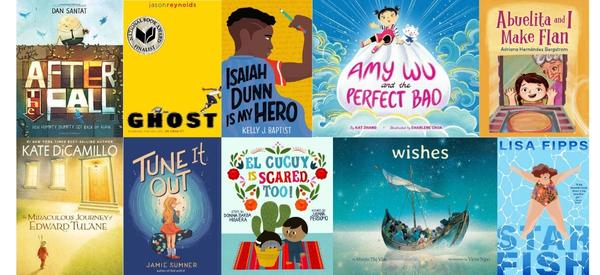When a character changes from the story’s beginning to the end, it’s called a character arc. These children’s books show character arcs that you can use as mentor texts to teach children about a character’s growth and change.
Of course, all well-written books should have the main character show an arc or else the readers will be unsatisfied.
At a reader’s request, I’m sharing my favorite picture books, chapter books, and middle grade books with strong character arcs that will be easily spotted by kid readers.
Help your readers and students find evidence in the text of the character’s words and behaviors to demonstrate the character’s internal journey from the beginning of the story to the end. What were they like at the beginning of the story? How about the end? And how did it change?
Children’s Books Mentor Texts to Teach Character Arc
Picture Books
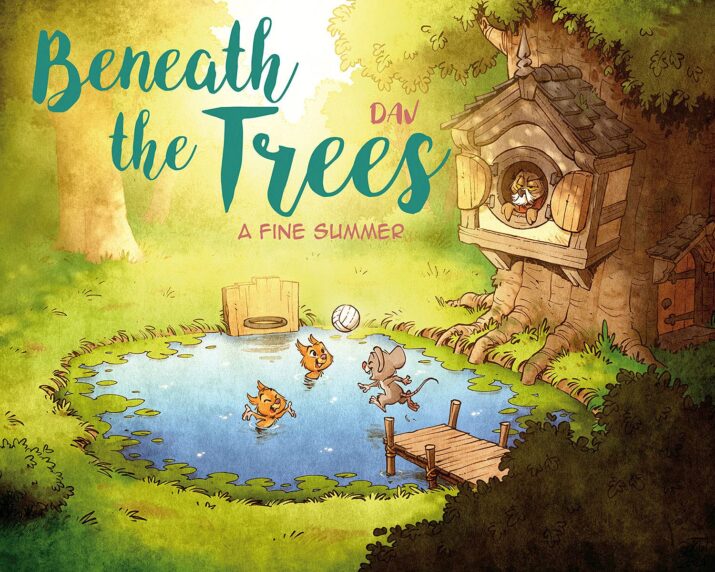
Beneath the Trees: A Fine Summer by Dav
In this charming story, a curmudgeonly owl starts out annoyed with the noisy kids playing ball in the lake. But through an unexpected series of events, Mr. Owl discovers that he also likes playing ball. Maybe he’ll even convince Mr. Toad? Filled with a joyful amount of onomatopoeia and minimal text, the comic panels expertly narrate Owl’s character arc and demonstrate the transformative power of play.
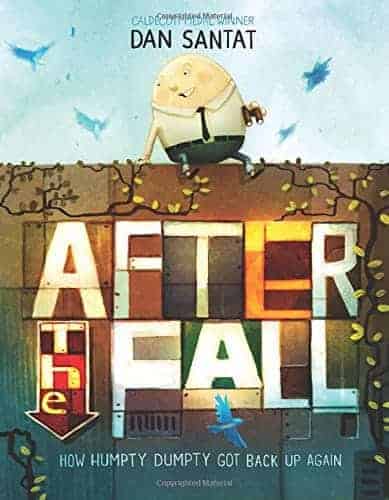
After the Fall: How Humpty Dumpty Got Back Up Again by Dan Santat
After his fall off the wall, Humpty Dumpty isn’t quite all together again because now he’s afraid of heights. Humpty decides to make a paper airplane that can fly high since he is too afraid to go high anymore. But the airplane he spends so much time crafting flies over the high wall. Even though he’s terrified, Humpty wants his airplane back. So he musters up his courage and climbs the wall. One step at a time. Until he’s not scared anymore.
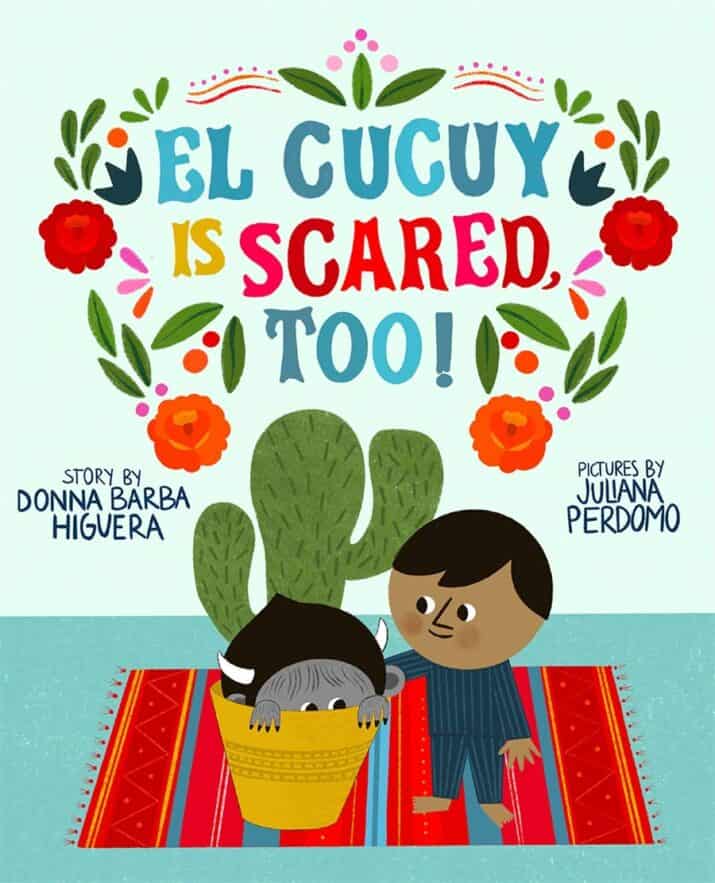
El Cucuy Is Scared, Too! by Donna Barba Higuera, illustrated by Juliana Perdomo
Ramón isn’t scared of El Cucuy anymore (the boogieman) because he’s more worried about his first day of school. And El Cucuy feels the same — he misses their old home and the desert. Ramon reassures El Cucuy that they’ll both get used to it and make new friends and that El Cucuy is strong and brave; they both are. It’s a sweet story of friendship with colorful, vibrant illustrations.
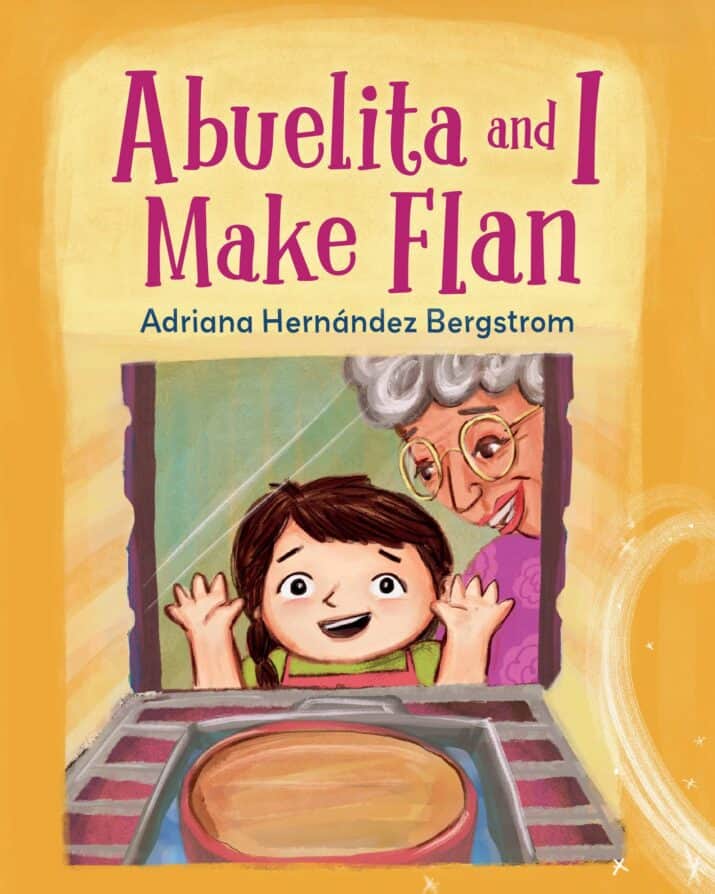
Abueltia and I Make Flan by Adriana Hernandez Bergstrom
Anita breaks Abeula’s special flan dish–and she feels guilty but doesn’t say anything while she’s helping her grandparents mix and cook and share the stories of their past. Anita finally confesses what happened and her abuela is happy to know the truth and isn’t mad. “A plate is a plate but YOU are irreplaceable.” You’ll love the story’s relatable topic, the mix of both languages, the Cuban culture, and the love that bursts through the relationships.
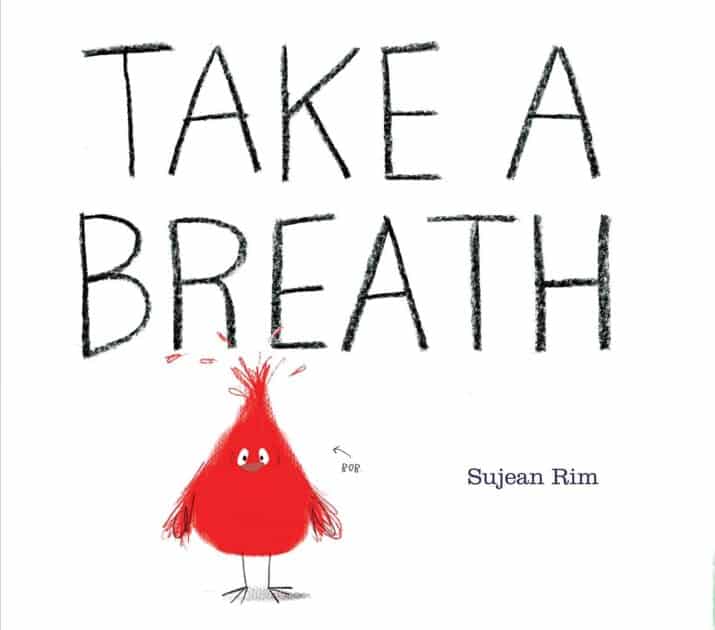
Take a Breath by Sujean Rim
Bob can’t fly quite yet. He tries, and practices and NOTHING happens. He starts freaking out that he’ll never fly!!! Crow tells Bob he’s been there and knows what Bob needs to do…he needs to take a breath. In a funny conversation and practice session, Crow teaches Bob the basics of breathing — noticing your breath and filling your belly, and so forth. And Bob feels so much better…and soon learns to fly!
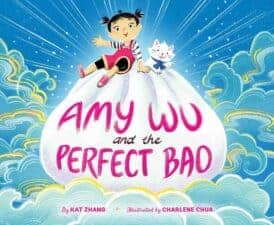
Amy Wu and the Perfect Bao by Kat Zhang, illustrated by Charlene Chua
Amy can do a lot of things, but she can’t make bao very well. Amy watches the dough rise, her dad rolls the dough while Amy’s dad makes the filling. Amy tries to make her own bao but she tries and tries and she just can’t. Then Amy has a great idea — to make Amy-sized pieces. Perfect! They get boiled and taste delicious. Want to make your own bao? There’s a family recipe in the back. A yummy introduction to Chinese dumplings and that with a little creative problem-solving, you can achieve your goals.
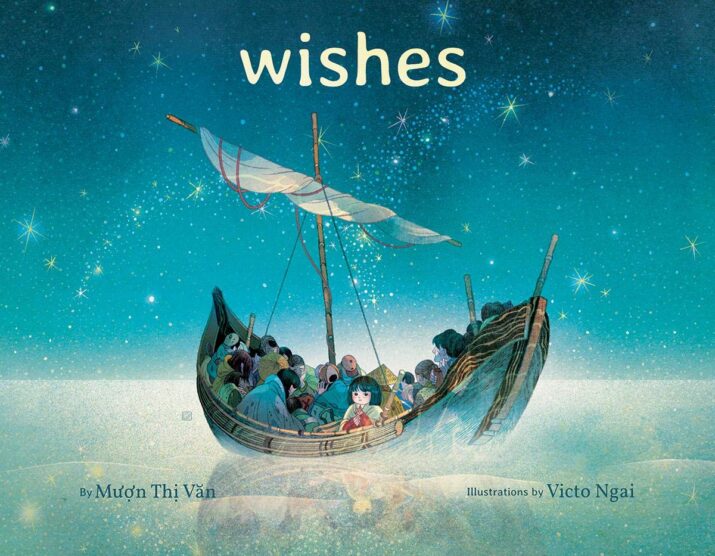
Wishes by Muon Thi Van, illustrations by Victo Ngai
Gorgeous illustrations and lyrical, personifying text work together in beautiful harmony to narrate the bittersweet goodbye as a family leaves their Vietnamese village and then the country by boat. They eventually arrive at a new home. It’s an important story arc of sad endings, challenging middles, and hopeful beginnings with room for inference and connection about the themes of family and feelings and the topic of immigration.
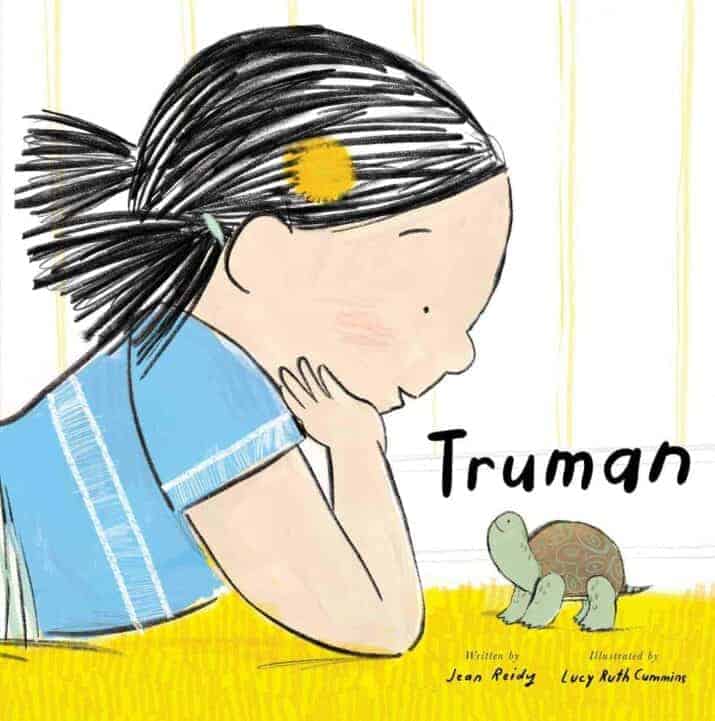
Truman by Jean Reidy, illustrated by Lucy Ruth Cummins
When his Sarah leaves, she tells Truman to be brave. Truman worries and waits for a thousand hours until he decides to go after his Sarah. Just as he’s about to leave the apartment, Sarah arrives home. Back in his habitat, he feels proud and happy. Sarah reads him a story about her day so he knows how one day for show-and-tell, he might go with her to her new school. From a writing perspective, this book makes a perfect mentor text for teaching repetition, sentence fluency, voice, narrative arc, sensory imagery, and character development. Truman shines brightly as a magnificent, well-crafted gem of a picture book.

Moon by Alison Oliver
Moon is a little girl who, like many little girls, has an overwhelmingly busy life. She wonders what it would be like to be free, to run, to be wild. Venturing outside, she meets a wolf. He and his pack show Moon wolfy activities — how to pounce, play, howl, and be still. And she is changed. She adopts new wild and free wolfy ways.
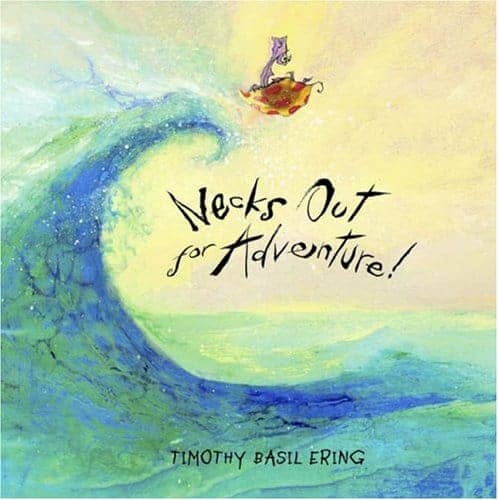
Necks Out for Adventure! by Timothy Basil Ering
Edwin wonders about his life staying hidden inside his shell. His mom tells him, “Necks out for adventure,” and before he knows it, he’s forced on an adventure that will show him the world and save his kidnapped family.
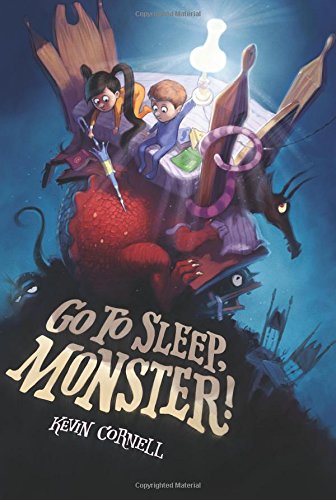
Go to Sleep, Monster by Kevin Cornell
George can’t sleep because he’s scared of the monster under his bed. His sister, Anna, gives the monster a stern lecture and learns that gasp! the under-the-bed-monster is scared of the monster who lives under the floor who, in turn, is scared of the monster under the room who is scared of . . . well, you get the idea. The monsters and human kids learn that they can all be friends which helps everyone sleep.
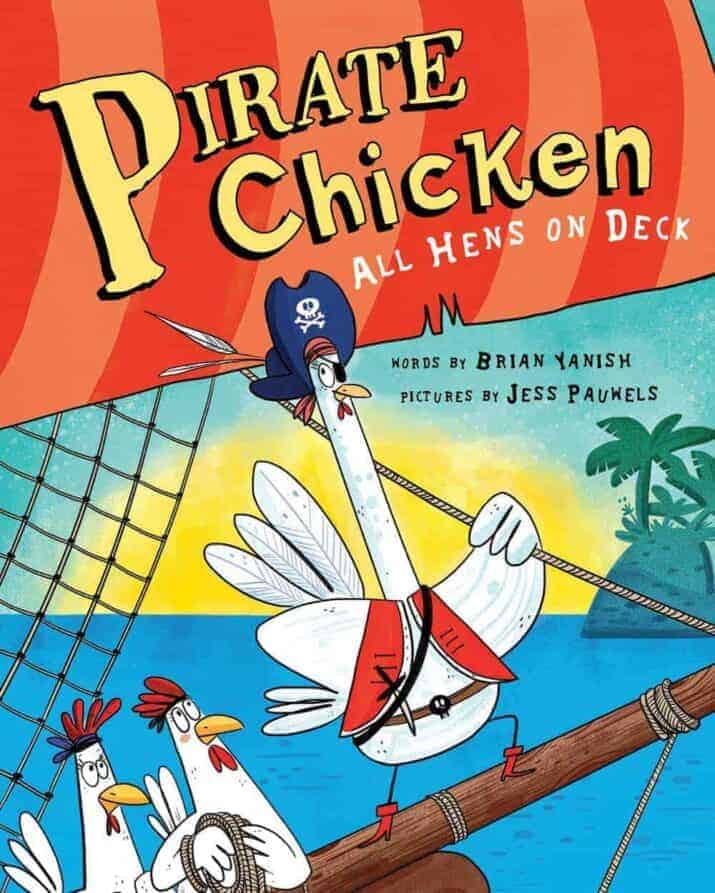
Pirate Chicken All Hens on Deck by Brian Yanish, illustrated by Jess Pauwels
Lily is an unusual chicken. When she meets a band of pirates, she seizes her moment to become a pirate, too. And soon, she’s taken over the ship, kicked off the pirates, and is living the pirate life. (Pillage and plundering for you landlubbers.) She becomes quite demanding and egocentric so the other chickens make her walk the plank. It’s a moment of clarity. Lily realizes she’s a chicken and not a pirate. She decides to stop pirating and helps her chicken friends find a good island to call home.
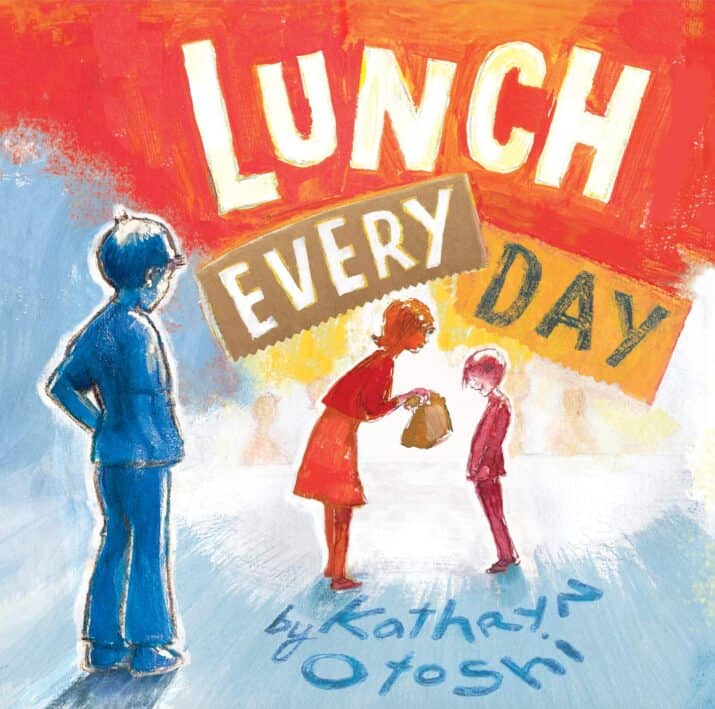
Lunch Every Day by Kathryn Otoshi
This is a story about a boy who, day after day, steals another boy’s lunch. In a surprising turn of events, he gets invited to the boy’s birthday party, and that boy’s mom gently approaches him. In another surprise, the mom tells the boy that she will make him a second lunch. Read between the lines (infer) –what do you notice about the boy’s family life that might make him behave the way he does? Do the mom’s actions surprise you?
Character Arcs in Chapter Books and Middle Grade Books
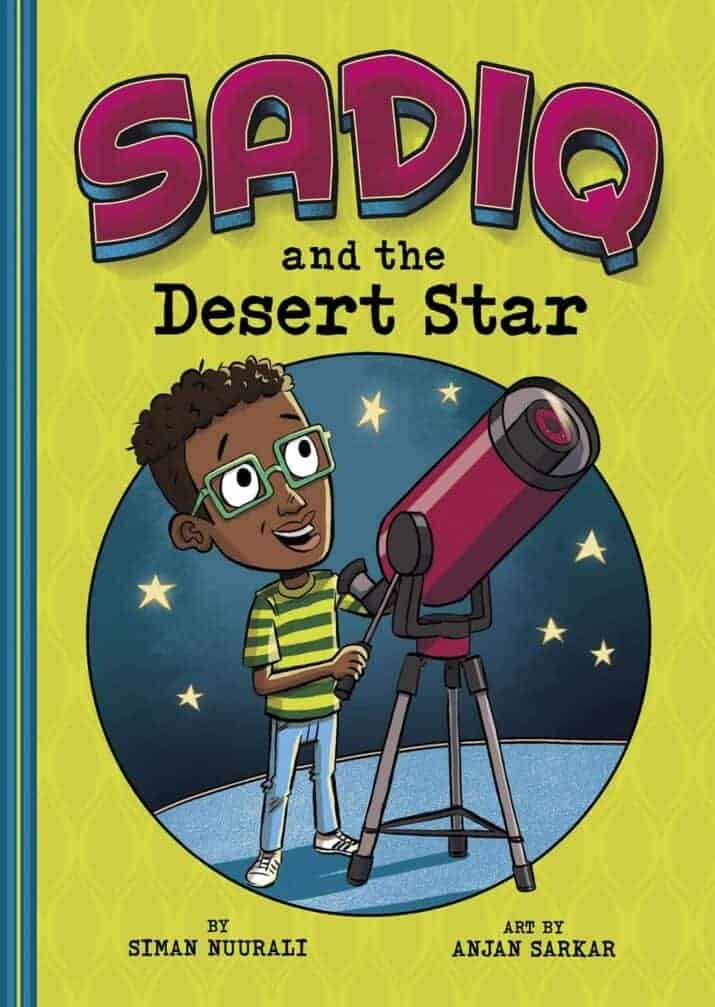
Sadiq and the Desert Star by Siman Nuurali, illustrated by Anjan Sarkar (ages 6 – 9)
Not only is this a great STEM story about a young boy who finds the stars to be fascinating, but it’s also a story with cultural diversity because Sadiq’s Muslim family is originally from Somalia. The story is also about how after a field trip to the planetarium, Sadiq and his friends start a space club and work together to raise money for a DIY telescope. Growing readers will enjoy the friendship, teamwork, STEM topics, and diversity found in this first book of the Sadiq series from Capstone Publishing’s Picture Window Books.
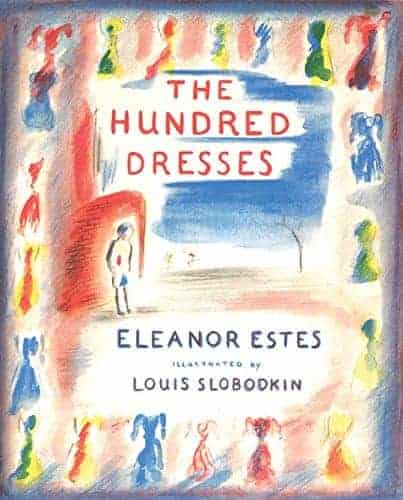
The Hundred Dresses by Eleanor Estes (ages 6 – 9)
Classmates including Maddie tease a girl in their class, Wanda, who says she has 100 dresses at home. When Maddie visits Wanda’s house, she discovers the bittersweet truth — she might not have real dresses, but she has drawings of 100 dresses. And Maddie feels terrible about her treatment of Wanda.

The Miraculous Journey of Edward Tulane by Kate DiCamillo (ages 6 – 9)
Edward is a china rabbit with a fancy wardrobe who was adored by the girl who owned him..until he gets lost. He experiences loss many times over and can hardly stand the pain. Yet a wise doll encourages Edward to open his heart to love again (character arc) — and that’s when he finds a miracle and love.
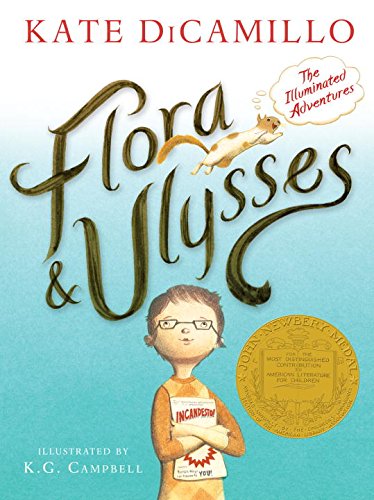
Flora and Ulysses: The Illuminated Adventures by Kate DiCamillo (ages 7 – 10)
Quirky and delightful, this is the story of a girl named Flora who rescues a squirrel and keeps it as a friend. Together they experience the world in a unique, funny, and wonderful way, and straighten it out, too.
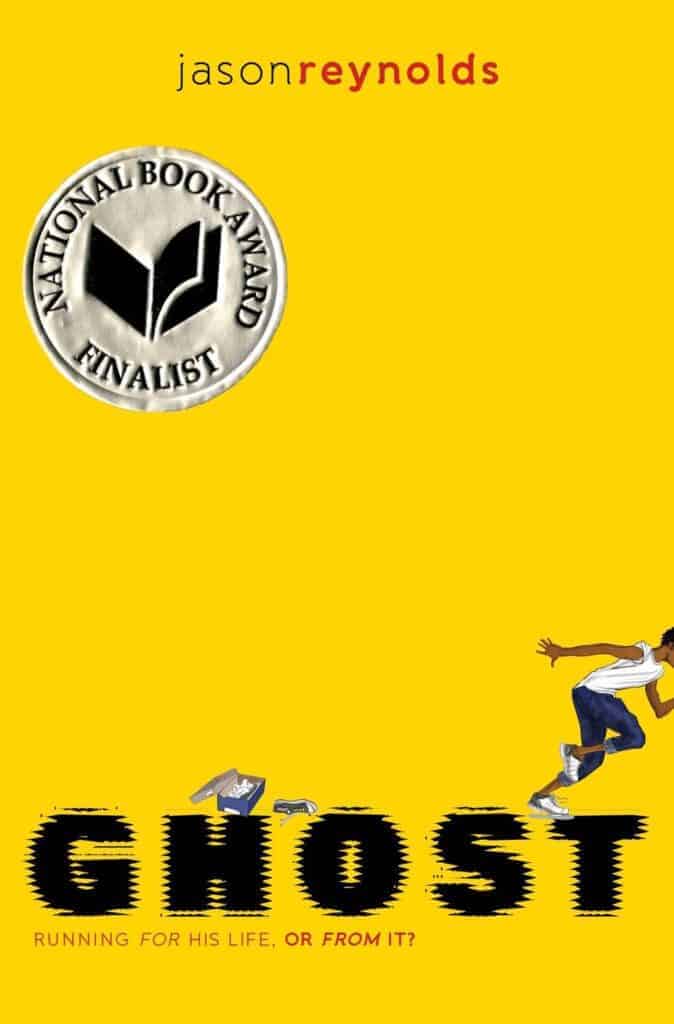
Ghost by Jason Reynolds (ages 9 – 12)
Ghost accidentally gets on a track team, and it’s life-changing. His coach becomes a mentor and father figure who pushes Ghost to take responsibility for his mistakes (stealing sneakers) and to start dealing with the ghosts of his past. Well-written with a hopeful message about growing up and growing into yourself. (Talk about a good mentor text for character arc!)
Heartbreaking and inspiring, this poignant story in verse shows a girl who learns, after years of fat-shaming and bullying, to define herself not based on what others say but on who she really is. Ellie’s nickname is Splash because of her size but Ellie loves swimming; it’s her safe escape where she feels the most comfortable. Her biggest bully? Her mother–who won’t buy her new clothes because she thinks it encourages Ellie’s weight gain and is pushing for gastro-bypass surgery. Not even Ellie’s dad stands up to her mom’s cruel treatment of Ellie. Fortunately, Ellie finds an understanding therapist who helps her move from powerless to powerful. “As I float, I spread out my arms and my legs. I’m a starfish, taking up all the room I want.” It’s brilliantly written and empowering. Run out and buy this book, it’s a must-read, must-own, sure-to-be-an-award-winner.
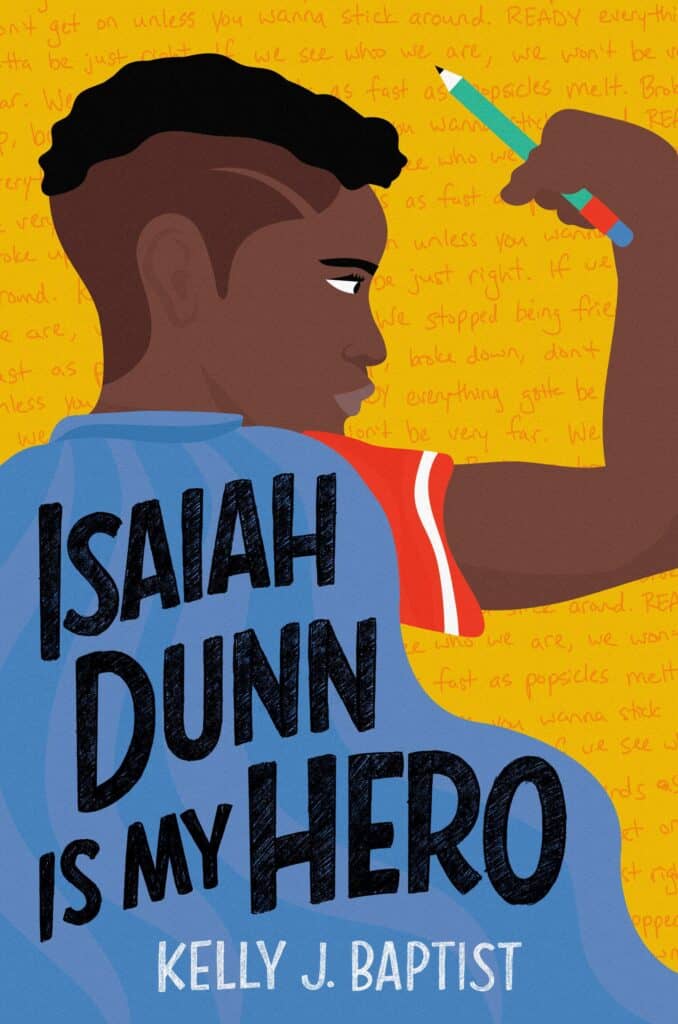
Isaiah Dunn is My Hero by Kelly J. Baptist (ages 9 – 12)
With themes of grief, family, poverty, poetry, the power of writing, and friendship — this beautiful story captures your heart with a struggling, heroic main character whose hopeful journey (arc) makes you believe in humanity again. After Isaiah’s dad dies, his mother stops working and starts drinking too much. The family of three now lives in a smokey motel where Isaiah watches his 4-year-old sister when his mom is passed out. He finds strength and inspiration in his father’s journaled stories about Isaiah Dunn Superhero and eventually, begins to write poems again in his own journal…poems that he and a new friend named Angel sell as a business, money he wants to give to his mom for a new place.
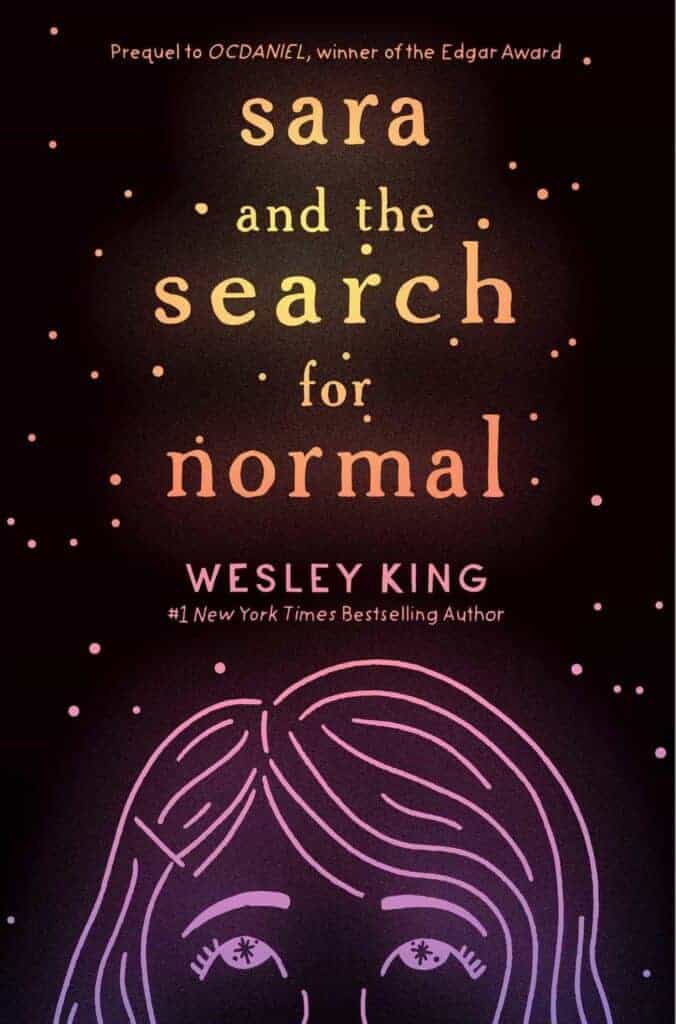
Sara and the Search for Normal by Wesley King (ages 9 – 12)
Sara wants to be cured of her mental illnesses and be “normal” like other kids so she makes rules for herself. Among other diagnoses, Sara is bipolar for which she blames herself. She hates her out-of-control brain and feels like nobody can help. Meanwhile, she begins group therapy where she makes a friend; a friend who is covered in hidden bruises. Sara and Erin think of themselves as Star Children, kids with alien DNA. It’s profoundly sad to witness Sara’s self-loathing yet still hoping for a better tomorrow. Sara begins to realize she wants to change her inner dialogue and accept herself. For readers, it’s a valuable opportunity to see inside Sara’s mind and how painful it is to have an invisible disease. It won’t make you think like her but will give you compassion.
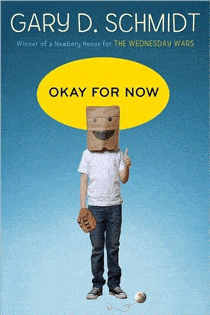
Okay for Now by Gary D. Schmidt (ages 9 – 12)
One of the BEST books ever, it’s so well-crafted with deep emotional resonance. Doug is a boy who is struggling to read with no support from his home life. Not only are his dad and older brother abusive but they all live in abject poverty. What saves Doug is his connection to a librarian who shows Doug Audubon’s bird paintings and how to draw. This eventually leads to reading and hope.
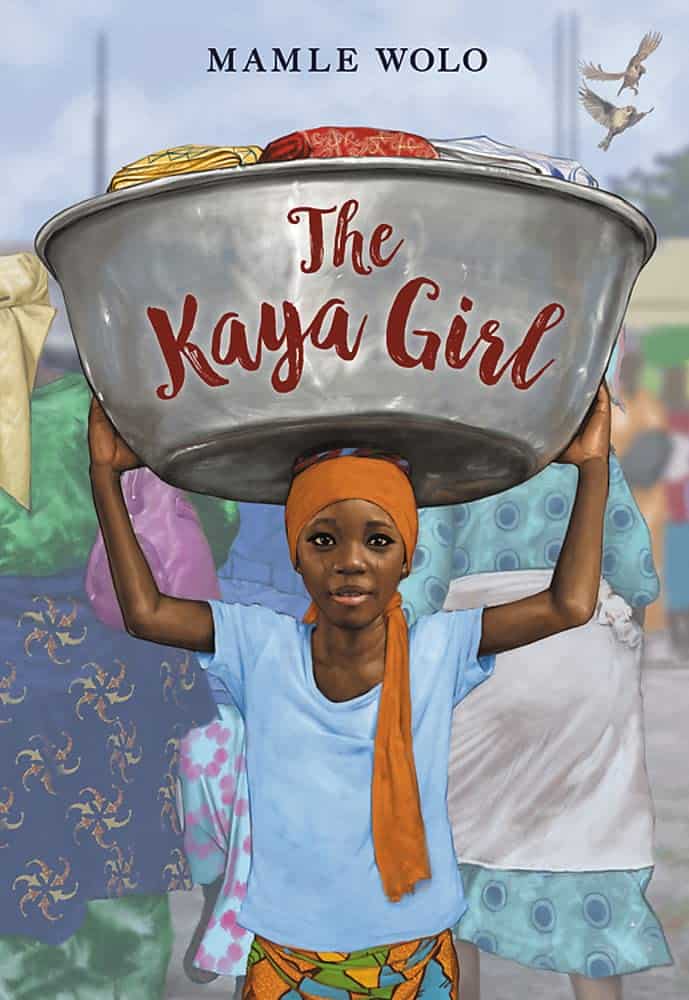
The Kaya Girl by Mamle Wolo (ages 9 – 12)
A thoughtful novel about a friendship that crosses regions, languages, income levels, and education–despite the stigmas and prejudices. Abena, from a rich southern family in Ghana, is spending the summer with her auntie to help at her auntie’s market store. There, Abena meets Faiza, a Muslim girl from northern Ghana who works as a kayayoo– a girl who uses a large head pan to carry shopping for customers. The two girls immediately become friends, and Abena’s eyes are opened to the differences in their lives and her own privileges. But when someone accuses Faiza of stealing, and Abena gets malaria, they are torn apart until fifteen years later in a beautiful full-circle moment.
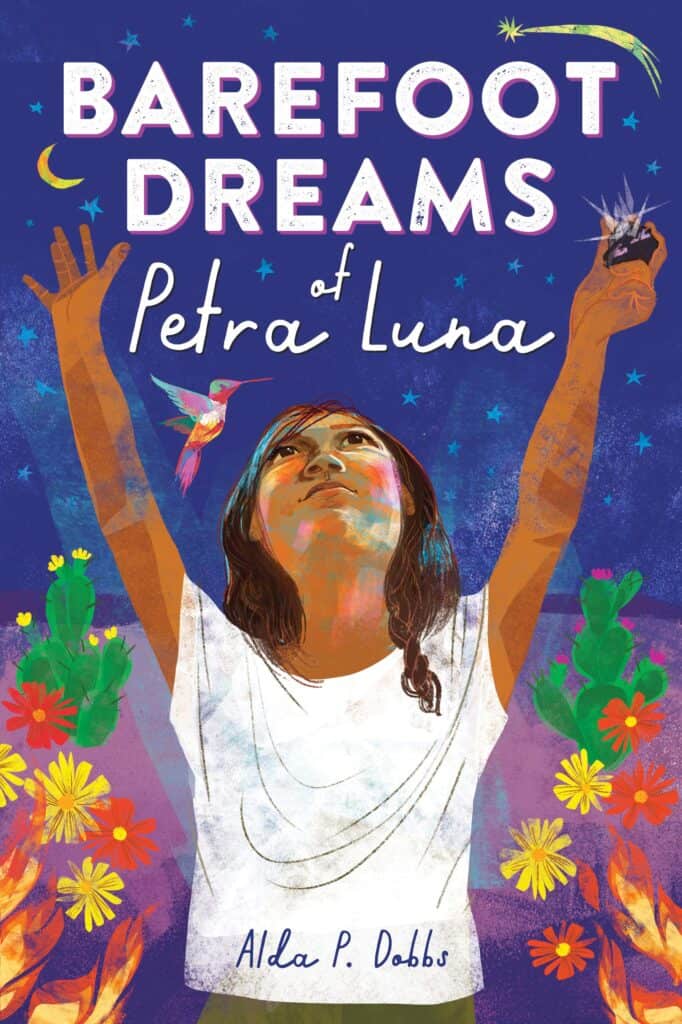
Barefoot Dreams of Petra Luna by Alda P. Dobbs (ages 9 – 12)
Based on the true history of the author’s great-grandmother, this is a beautiful and important story of hope, resiliency, and family set in historical Mexico, 1913. Petra Luna, her Abuela, her little sister, and her baby brother flee their home when Federales burn the village. Petra’s Abuelita calls reading and writing barefoot dreams, meaning they’re not meant to go far but when they’re helped by a female rebel captain, Petra reaffirms that she can be more than her Abuelita thinks — that she can keep her promise to save her family and realize her barefoot dreams, too. Their trials culminate in a harrowing and life-threatening experience as they wait with throngs of other people trying to cross the bridge into the United States before the Federales arrive on the Mexican side. Exciting, interesting, and inspiring.
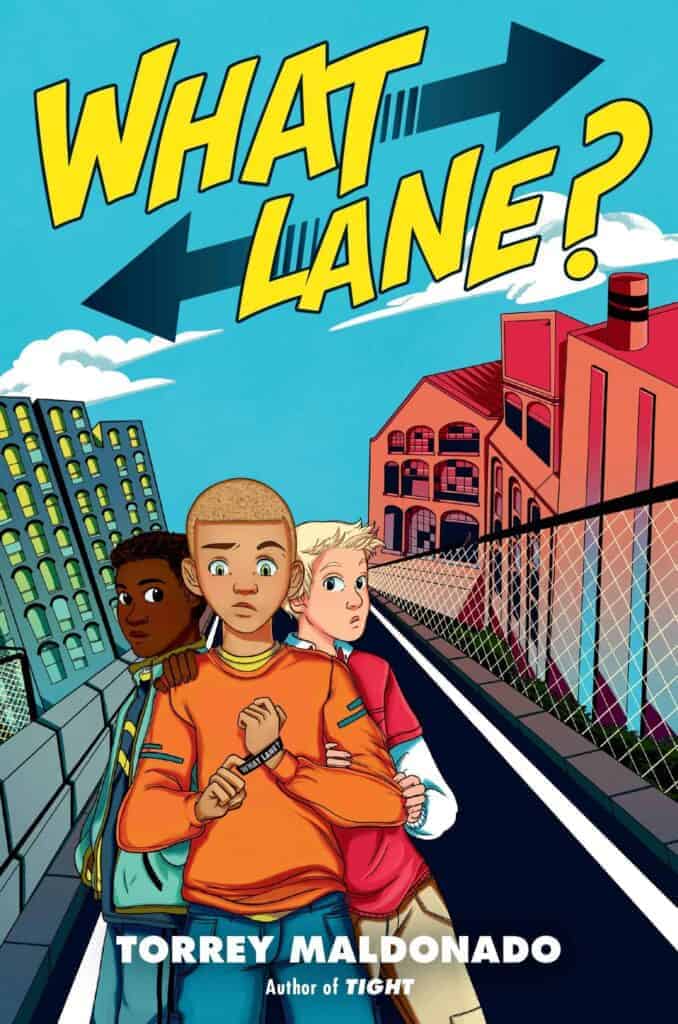
What Lane? by Torrey Maldonado (ages 9 – 12)
Short and fast-paced, this is the story of a boy who learns to think for himself instead of being influenced by friends and how Stephen notices he’s living in a world that treats him differently than his white friends. Stephen concludes that he gets to decide what lane he’s in– not the world or his peers.
One of my favorite middle-grade books EVER, this book brilliantly captures a young boy’s disinterest in writing poetry which gradually shifts with the help of an excellent teacher. Talk about character growth! Through his diary and poems, he reveals to us who he is. As the teacher shares mentor poems with her class, Jack wrestles with his thoughts about the poems. Then he uses the poems for inspiration for his own writing. I love both Jack’s honest interactions with text as well as seeing him share parts of himself through writing.
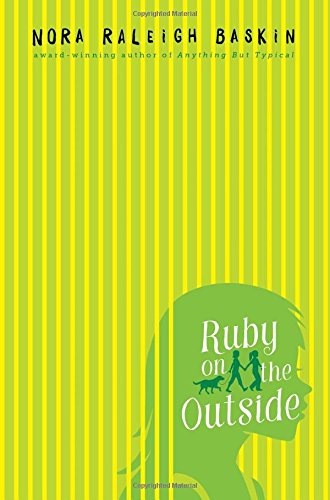
Ruby on the Outside by Nora Raleigh Baskin (ages 9 – 12)
Ruby doesn’t want her new and only friend to learn that her mom is in jail. To make matters worse, Ruby thinks that her friend’s family is the reason her mom IS in jail. I found this to be a thoughtful coming-of-age story about a girl who feels like she has two lives — one on the inside and one on the outside, and how she integrates the two. Kids will be able to put themselves into Ruby’s shoes and experience what it’s like to be her.
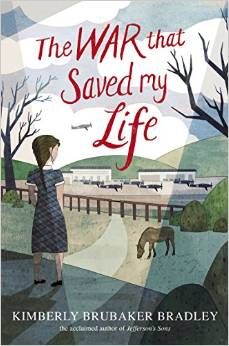
The War That Saved My Life by Kimberly Brubaker Bradley (ages 9 – 12)
Ada and her brother escape their mother’s abuse when the London children are evacuated during WWII and go to live with a grieving woman in a small country town. It’s difficult for both the woman and children to trust but slowly the trust grows and all three regain something lost – hope and love. “I slipped my hand into hers. A strange and unfamiliar feeling rand through me. It felt like the ocean, like sunlight, like horses. Like love. I searched my mind and found the name for it. Joy.” I can’t recommend this book enough, it just touched my heart at such a deep level.
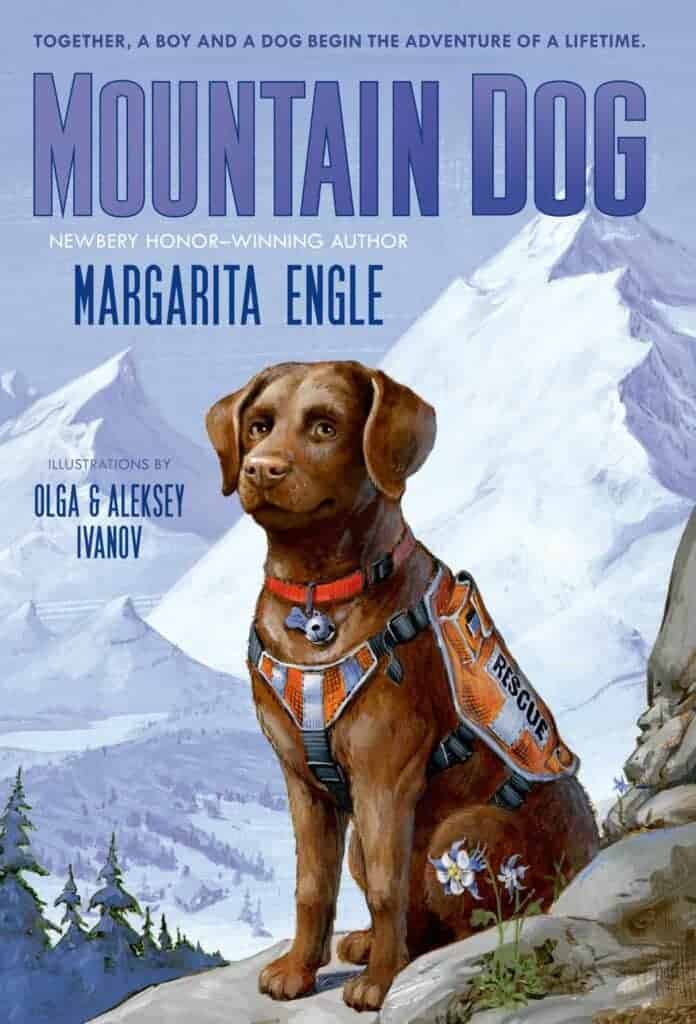
Mountain Dog by Margarita Engle, illustrated by Aleksey & Olga Ivanov (ages 9 – 12)
When Tony’s mother is sent to jail, Tony is sent to stay with a great uncle he has never met in the Sierra Nevada mountains. With his tió and a search-and-rescue dog named Gabe by his side, Tony learns how to track wild animals, is welcomed to the Cowboy Church, and makes new friends at the Mountain School. Most importantly, his uncle Gabe shows Tony what unconditional love is –for the first time in his life.
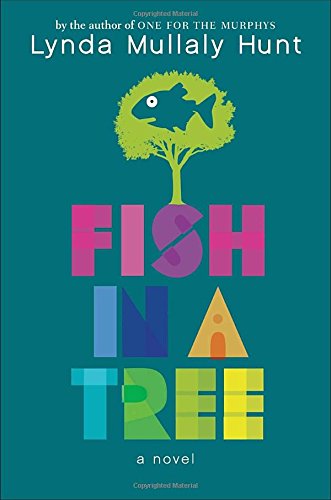
Fish in a Tree by Lynda Mullaly Hunt (ages 9 – 12)
Both Ally and her older brother have hidden that they can’t read — until Mr. Daniels helps her learn to read and discover her value. It’s a beautiful, emotionally resonate story that will help kids either see themselves or develop empathy and compassion.

Restart by Gordon Korman (ages 9 – 12)
A head injury after a fall off the roof means Chase has no memory. But he starts to get clues about his personality when a strange girl dumps ice cream on his head and his little sister is scared of him, and his two best friends think it’s funny to torment other kids and treat old people with disregard. Just what kind of person was he? Chase doesn’t think he likes what he’s learning about himself. Now he’ll have to decide what kind of person he wants to be going forward. Because he’s enjoying the film club and the new (“nerdy”) friends he’s made. It’s a thought-provoking novel that will challenge kids to consider how their behavior influences the way other people perceive them.
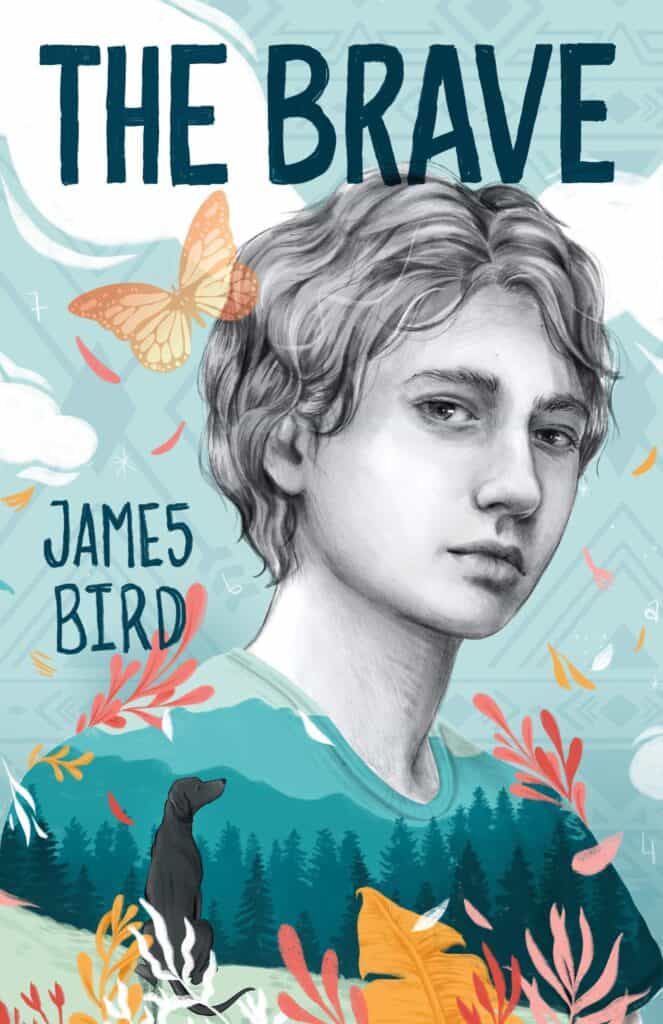
The Brave by James Bird (ages 9 – 12)
Run out to get this absolutely jaw-dropping, stunningly beautiful book with a main character you’ll fall in love with (and whose character arc is HUGE.) It’s filled with metaphorical, meaningful, and symbolic writing and you will feel ALL the feelings. When Collin, a boy who counts every letter spoken to him and says the number out loud, gets kicked out of yet another school, his neglectful father sends Collin to live with his mom. Collin has never met his mother but he’s curious to meet her and live on the Ojibwe reservation. Living with her is a totally different experience than his previous home — because with his mother, he’s welcomed and not judged. He befriends the neighbor girl who teaches Collin how to be brave. Which he needs. And so does she because she’s going to be a butterfly soon…
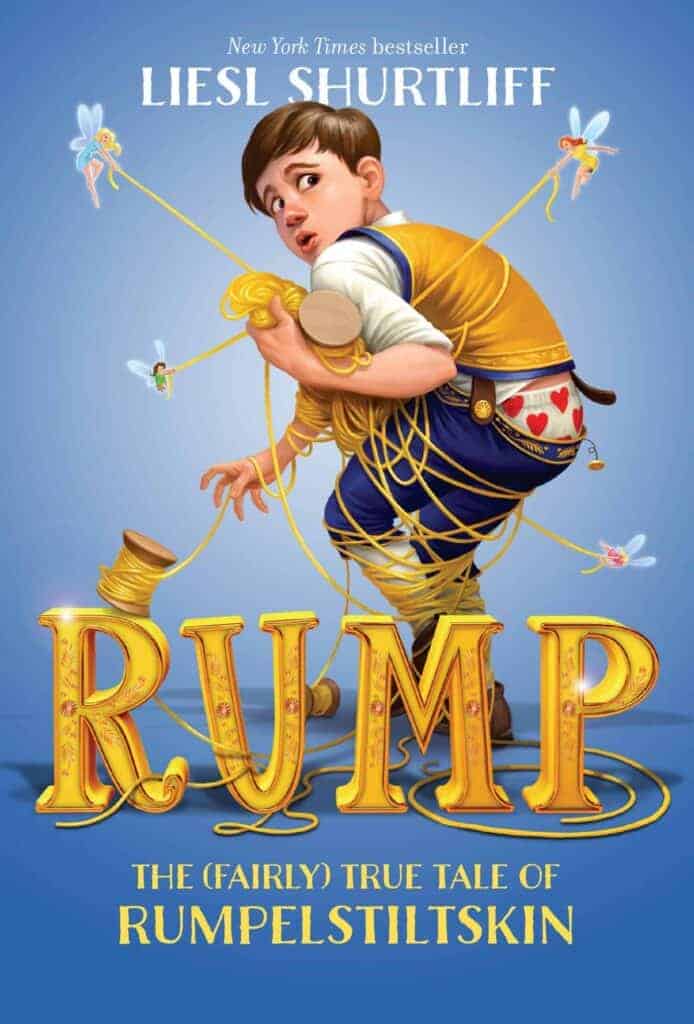
Rump by Liesl Shurtliff (ages 8 – 12)
In this surprisingly thoughtful story from Rumplestiltskin’s perspective, Rump discovers the difference between who he is versus who others say that he is. After Rump learns that he’s trapped in his mom’s magical “rumple”, it explains why he feels compelled to make straw into gold for any trade that someone offers him. Of course, this is what the miller takes advantage of, leaving Rump without options or control over the trades. With the help of his troll friends, his friend Red, and his aunts, Rump finds a way to stop the magical curse and give the queen back her child.

Cress Watercress by Gregory Maguire, illustrated by David Litchfield (ages 8 – 12)
With delicious figurative language and deliberate word choice, this is a stunningly beautiful story about family, community, grief, and stories which begs to be read aloud. Cress and her family leave their cozy burrow after the death of her father. They move to the Broken Arms oak tree ruled by a cranky Owl with a noisy neighbor squirrel family. Cress helps her mom collect moths to pay their rent, leaving her mom time to work and to help gather ingredients for her sickly brother’s special tea. In a beautiful character arc, Cress navigates her new environment, the natural world, and the stories around her, all of which help her understand her inner world, especially how grief waxes and wanes like the moon’s cycles. Filled with immensely lovable characters, a gentle storyline of adventure and discovery, and lavish illustrations, I adore everything about this book.
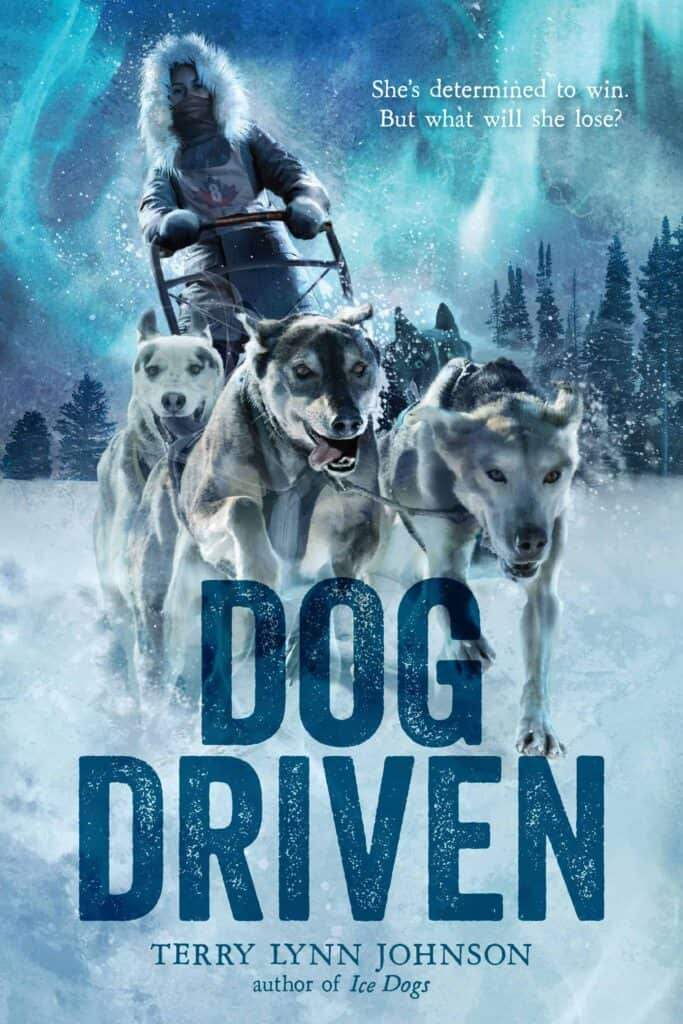
Dog Driven by Terry Lynn Johnson (ages 9 – 12)
A story about finding your strength even if it looks like a weakness…McKenna enters a long dog sled race in order to bring awareness to her sister’s degenerative eye disease. Which McKenna can tell she has, too. Her eyesight is worse and worse. She just doesn’t want to tell her parents and be treated differently. During the race, she relies on her lead dog to guide the sled. Another racer, a boy with a blind dog, shows her that his dog is a powerful leader. He quickly notices that’s McKenna can’t see either. The challenges of the race and her new friendship help McKenna realize that just like Zesty the blind dog, she is not disabled and that her differences make her better.
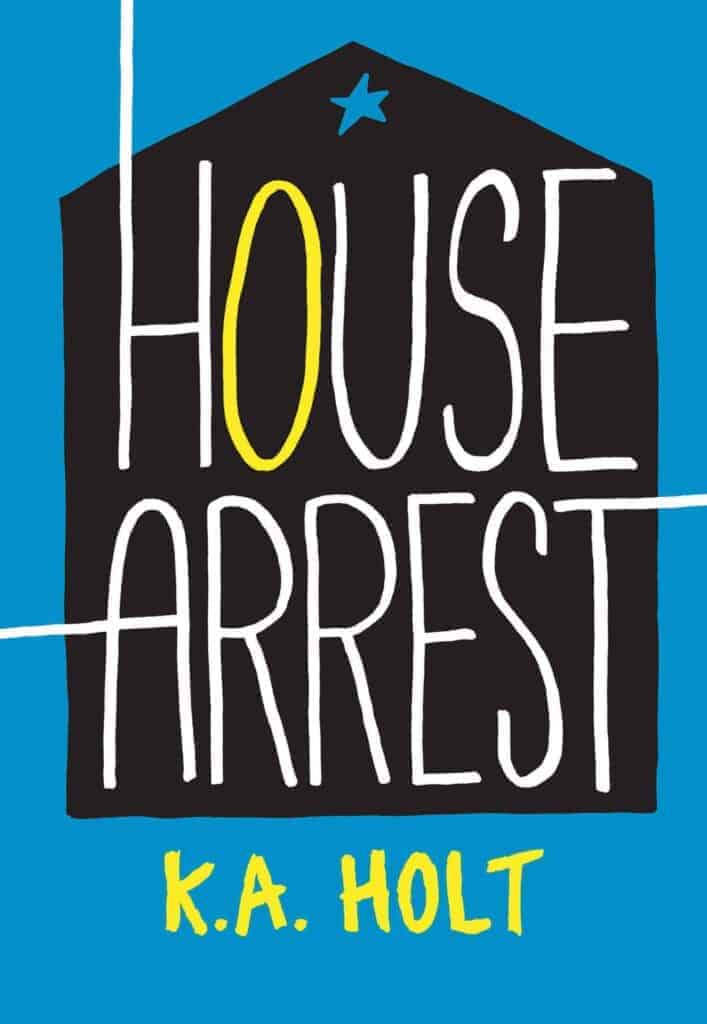
House Arrest by K.A. Holt (ages 9 – 12)
A tender, heartwarming story that shows a brave boy who feels anger, fear, worry, and love over his challenging situation. Timothy is under house arrest for the next year, living with a brother who needs constant medical care, and feeling so much pain over his big life changes. Part of his year-long punishment is to meet with a probation officer, meet with a therapist, and write in a journal which is the book we’re reading. When his little brother gets assigned an abusive new nurse, Timothy feels like even if he gets thrown in juvie, he must do something drastic to help his brother.
Amal’s life is turned upside down when she offends a regional Pakistani overlord and is forced to leave her home and school to work in his home as a servant — indefinitely. She finds her inner strength and fights back, freeing herself and the other household slaves. The author deftly sets the scene of rural Pakistan. Readers will feel transported, feel the injustice, and cheer for Amal’s bravery.

The Beast and the Bethany by Jack Meggitt-Phillips, illustrated by Isabelle Follath (ages 8 – 12)
If you like snarky illustrated books that make you laugh, don’t miss this entertaining fantasy. Ebenezer, a man over 500 years old, is kept alive by a monstrous Beast who gives him youth cream in return for exotic foods…and now the Beast wants to eat a child. Still wanting to be youthful, Ebenezer adopts the rudest girl at a local orphanage, Bethany, and begins to fatten her up. She is horrid for a while until she’s not (character arc)…and Ebenezer feels so bad that he confesses his evil plan. Together, find a solution to get rid of the Beast and get a happy ending! (Or do they?)
Marcus’s mother takes him and his brother to Puerto Rico, the home country of their father who abandoned them years before. Even though they are only meant to visit relatives, Marcus hopes to find his father and reconnect. Instead, he finds a loving, extended family, the truth about his dad, and a growing sense of his own identity. Remarkable. I loved every moment of this story and recommend it as a mentor text for teaching character arc.
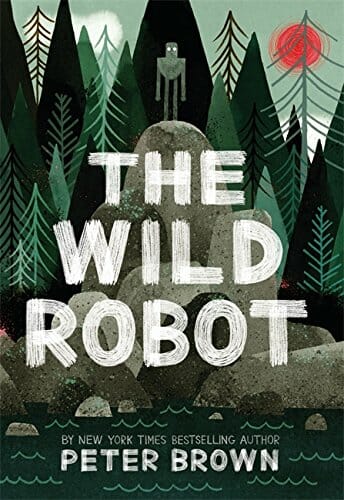
The Wild Robot by Peter Brown (ages 9 – 12)
Roz is a robot alone on an island with only animals. To survive, she figures out how to live in the wild despite the animals seeing her as a monster but that changes when Roz adopts a gosling and makes a nest. It’s a meaningful hero’s journey story of family, love, and community that consistently garners love from readers.
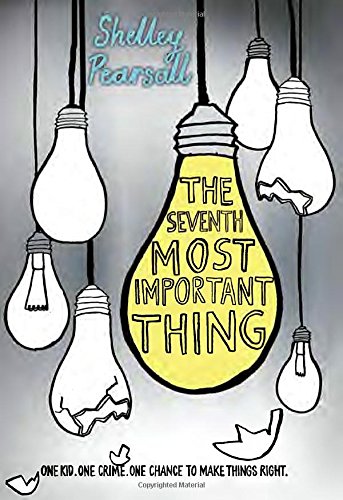
The Seventh Most Important Thing by Shelley Pearsall (ages 9 – 12)
Angry with grief, Arthur throws a brick at Junk Man’s head. The judge sentences Arthur to work for the Junk Man who asks Arthur to collect the items on the list of the Seven Most Important Things. Transformed by the experience, Arthur becomes an advocate for the Junk Man’s art. This is fictional but is inspired by the true story of American folk artist James Hampton whose work is in the Smithsonian. This story resonates emotionally and would make for a great bedtime or class read aloud.
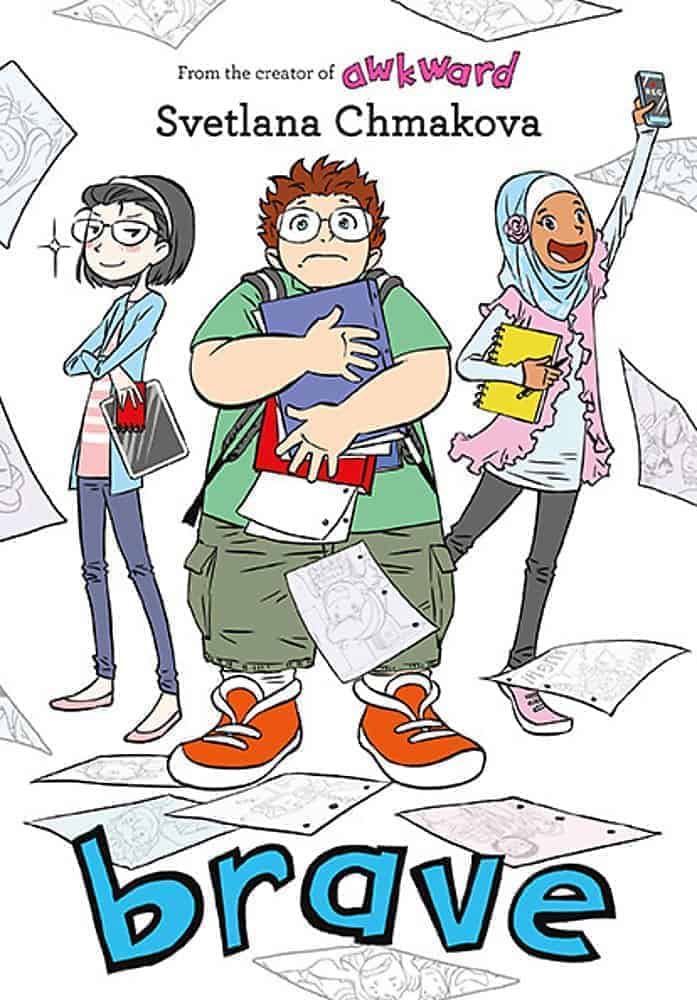
Brave by Svetlana Chmakova (ages 9 – 12)
Jensen is the miserable target of the school’s bullies. His friends Jenny and Akilah decide to write newspaper articles to help him, but their plans made without Jensen’s consent hurt their friendship. The ups and downs and challenges of Jensen’s life (which he relates to a video game) show how he finds his confidence, stops the bullies, and grows into who he is.
Genius story crafting and meaningful life lessons. When his grandfather’s butler arrives to help out 6th grade Carter’s family, sharing his passion for the game of Cricket, filling a void the family didn’t know they had. Butler gives Carter purpose, structure, and belonging. “Make good decisions and remember who you are,” he often reminds Carter and Carter’s sisters. Along this journey, Carter learns to do just what the title commands — pay attention to his life and to who loves him.

Dream, Annie, Dream by Waka T. Brown (ages 9 – 12)
Annie is a Japanese American girl who loves theater and basketball. Due to racism and influential parents, she’s not cast in the role she deserves in the summer production and now the school play. Surprised by what’s happening, Annie begins to see the prejudice all around her that she’s never noticed. She almost gives up her dreams until a chance arrives to write a play of her own.

Patina by Jason Reynolds (ages 9 – 12)
Patina’s anger sometimes gets the best of her but running helps. She’s mad about her dad dying, her mom’s legs being amputated, and her new school. When her track coach makes Patty work with her teammates in a relay, she’s forced to rely on them. And that changes things; that changes her. Patina is a beautiful coming-of-age story that will tug at your emotions.
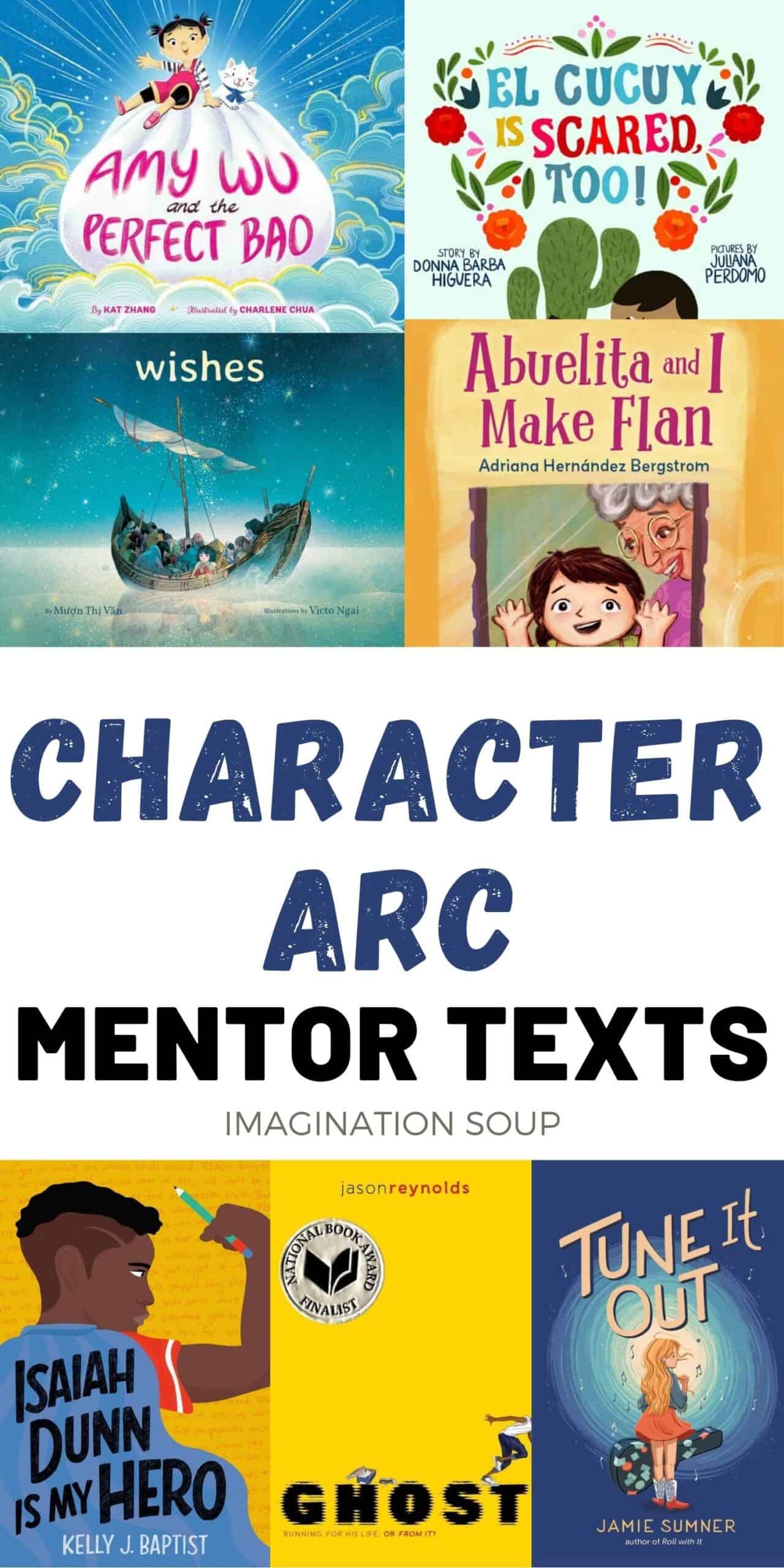
KEEP READING

 PARENTING TIPS
PARENTING TIPS







 PREGNANCY
PREGNANCY








 BABY CARE
BABY CARE








 TODDLERS
TODDLERS








 TEENS
TEENS


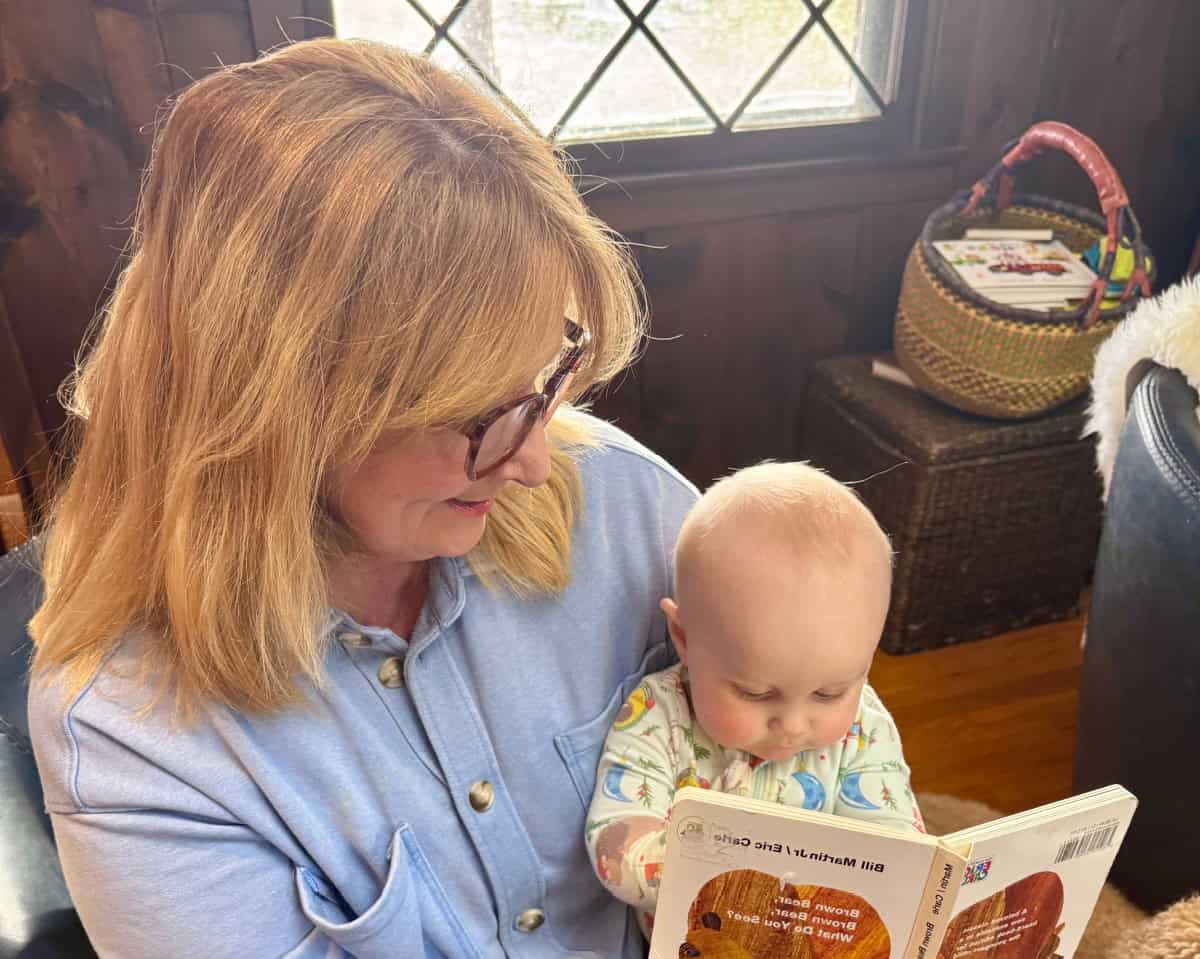



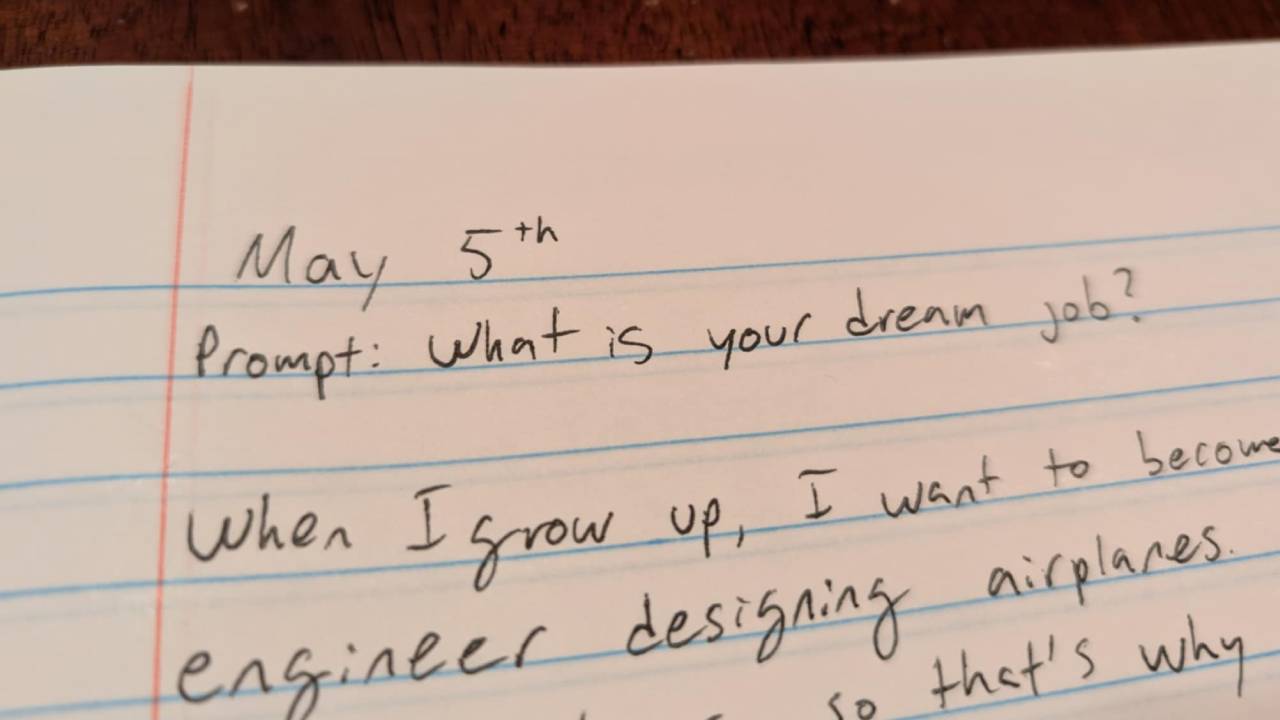

 HEALTH CARE
HEALTH CARE






 ACTIVITIES & CRAFTS
ACTIVITIES & CRAFTS








 CONTACT
CONTACT ABOUT
ABOUT